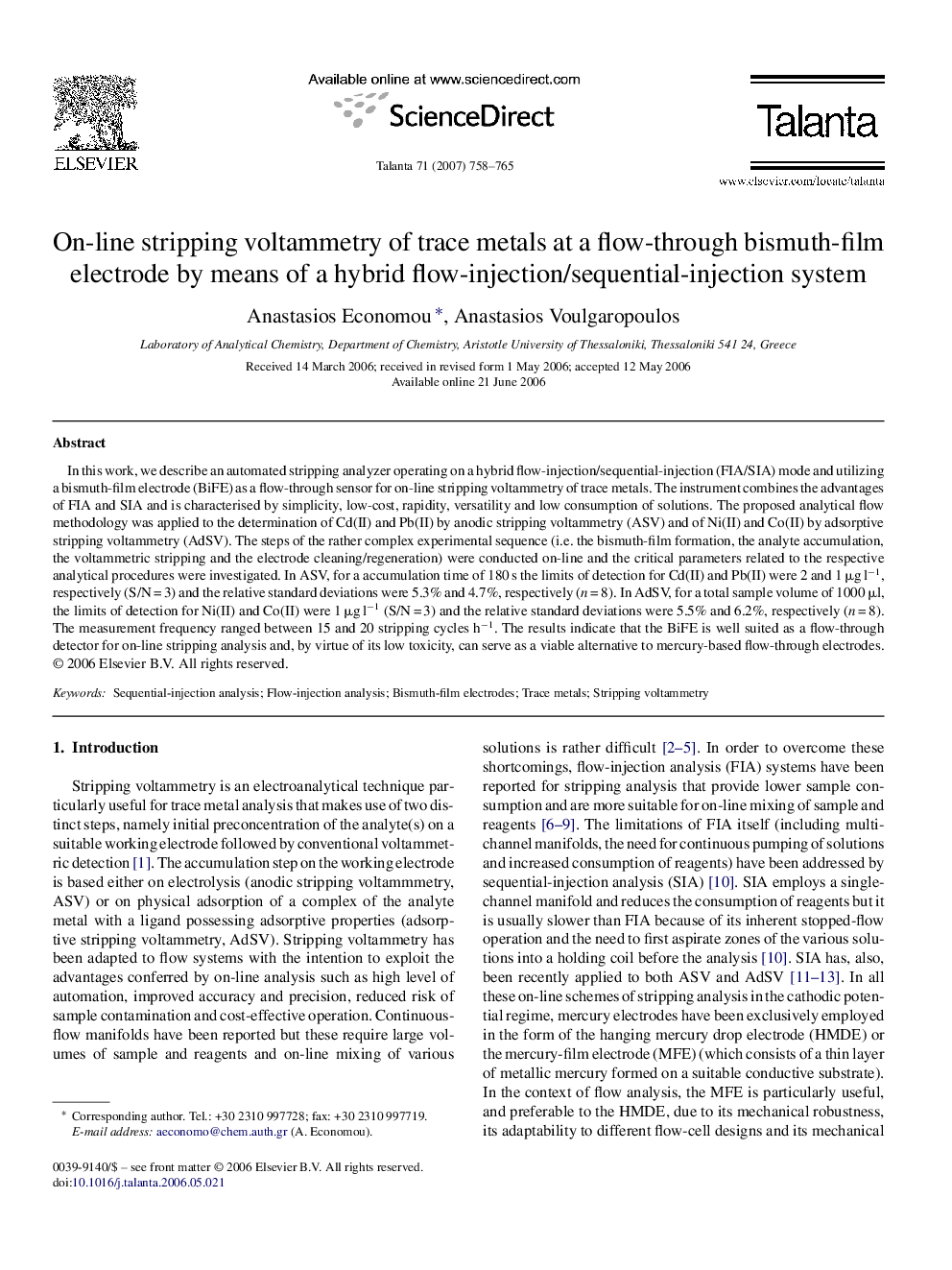| Article ID | Journal | Published Year | Pages | File Type |
|---|---|---|---|---|
| 1244249 | Talanta | 2007 | 8 Pages |
In this work, we describe an automated stripping analyzer operating on a hybrid flow-injection/sequential-injection (FIA/SIA) mode and utilizing a bismuth-film electrode (BiFE) as a flow-through sensor for on-line stripping voltammetry of trace metals. The instrument combines the advantages of FIA and SIA and is characterised by simplicity, low-cost, rapidity, versatility and low consumption of solutions. The proposed analytical flow methodology was applied to the determination of Cd(II) and Pb(II) by anodic stripping voltammetry (ASV) and of Ni(II) and Co(II) by adsorptive stripping voltammetry (AdSV). The steps of the rather complex experimental sequence (i.e. the bismuth-film formation, the analyte accumulation, the voltammetric stripping and the electrode cleaning/regeneration) were conducted on-line and the critical parameters related to the respective analytical procedures were investigated. In ASV, for a accumulation time of 180 s the limits of detection for Cd(II) and Pb(II) were 2 and 1 μg l−1, respectively (S/N = 3) and the relative standard deviations were 5.3% and 4.7%, respectively (n = 8). In AdSV, for a total sample volume of 1000 μl, the limits of detection for Ni(II) and Co(II) were 1 μg l−1 (S/N = 3) and the relative standard deviations were 5.5% and 6.2%, respectively (n = 8). The measurement frequency ranged between 15 and 20 stripping cycles h−1. The results indicate that the BiFE is well suited as a flow-through detector for on-line stripping analysis and, by virtue of its low toxicity, can serve as a viable alternative to mercury-based flow-through electrodes.
